Novel Deperming Protocols to Reduce Demagnetizing Time and Improve the Performance for the Magnetic Silence of Warships
Abstract
:1. Introduction
2. Proposed Deperming Protocol Using the Preisach Model
2.1. Preisach Model
2.2. Conventional Deperming Protocols
2.3. The Proposed Deperming Protocol Using the Preisach Model
3. Simulation and Experiment Setup
4. Results and Discussion
4.1. Simulation Results
4.2. Experiment Results
5. Conclusions
Author Contributions
Funding
Conflicts of Interest
References
- Modi, A.; Kazi, F. Electromagnetic Signature Reduction of Ferromagnetic Vessels Using Machine Learning Approach. IEEE Trans. Magn. 2019, 55, 6000606. [Google Scholar] [CrossRef]
- Norgen, M.; He, S. Exact and explicit solution to a class of degaussing problems. IEEE Trans. Magn. 2000, 36, 308–312. [Google Scholar] [CrossRef]
- Raveendra, R.; Varm, A. Design of Degaussing System and Demonstration of Signature Reduction on Ship Model through Laboratory Experiments. Phys. Procedia 2014, 54, 174–179. [Google Scholar]
- Tarr, P.B. Method of Measuring Magnetic Effects Due to Eddy Currents. U.S. Patent 4648041A, 3 March 1987. [Google Scholar]
- TBynes, M.; Russel, G.J.; Biley, A. Comparison of stepwise demagnetization techniques. IEEE Trans. Magn. 2002, 38, 1753–1758. [Google Scholar]
- Wang, R.F.; Li, J.; McConville, W.; Nisoli, C.; Ke, X. Demagnetization protocols for frustrated interacting nanomagnet arrays. J.Appl. Phys. 2007, 101, 9J104. [Google Scholar] [CrossRef] [Green Version]
- Ju, H.S.; Chung, H.J.; Im, S.H.; Jeong, D.W.; Kim, J.W.; Lee, H.B.; Park, G.S. Efficient Deperming Protocols Based on the Magnetic Properties in Demagnetization Process. IEEE Trans. Magn. 2015, 51, 7301704. [Google Scholar] [CrossRef]
- Ju, H.S.H.W.; Chung, H.J.; Park, G.S. A Study on the Deperm Procols Considering Demagnetizing Field of a Ferromagnetic Material. J. Magn. 2014, 19, 43–48. [Google Scholar] [CrossRef] [Green Version]
- Mayergoyz, I.D.; Friedman, G. Generalized Preisach model of hysteresis. IEEE Trans. Magn. 1988, 24, 212–217. [Google Scholar] [CrossRef]
- Birsan, M. Simulation of a Ship’s Deperming Process Using the Jiles-Atherton Model. IEEE Trans. Magn. 2021, 57, 7300407. [Google Scholar] [CrossRef]
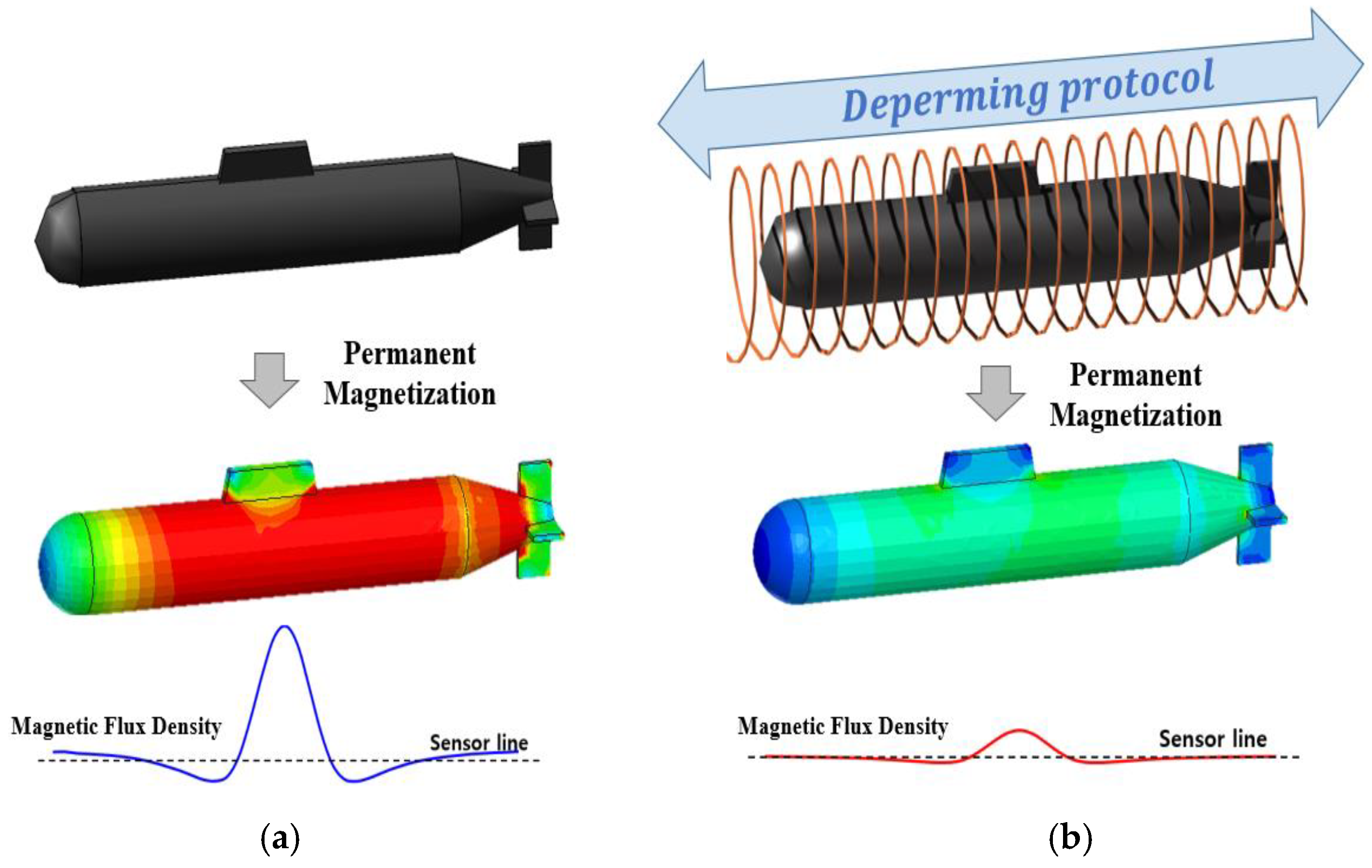

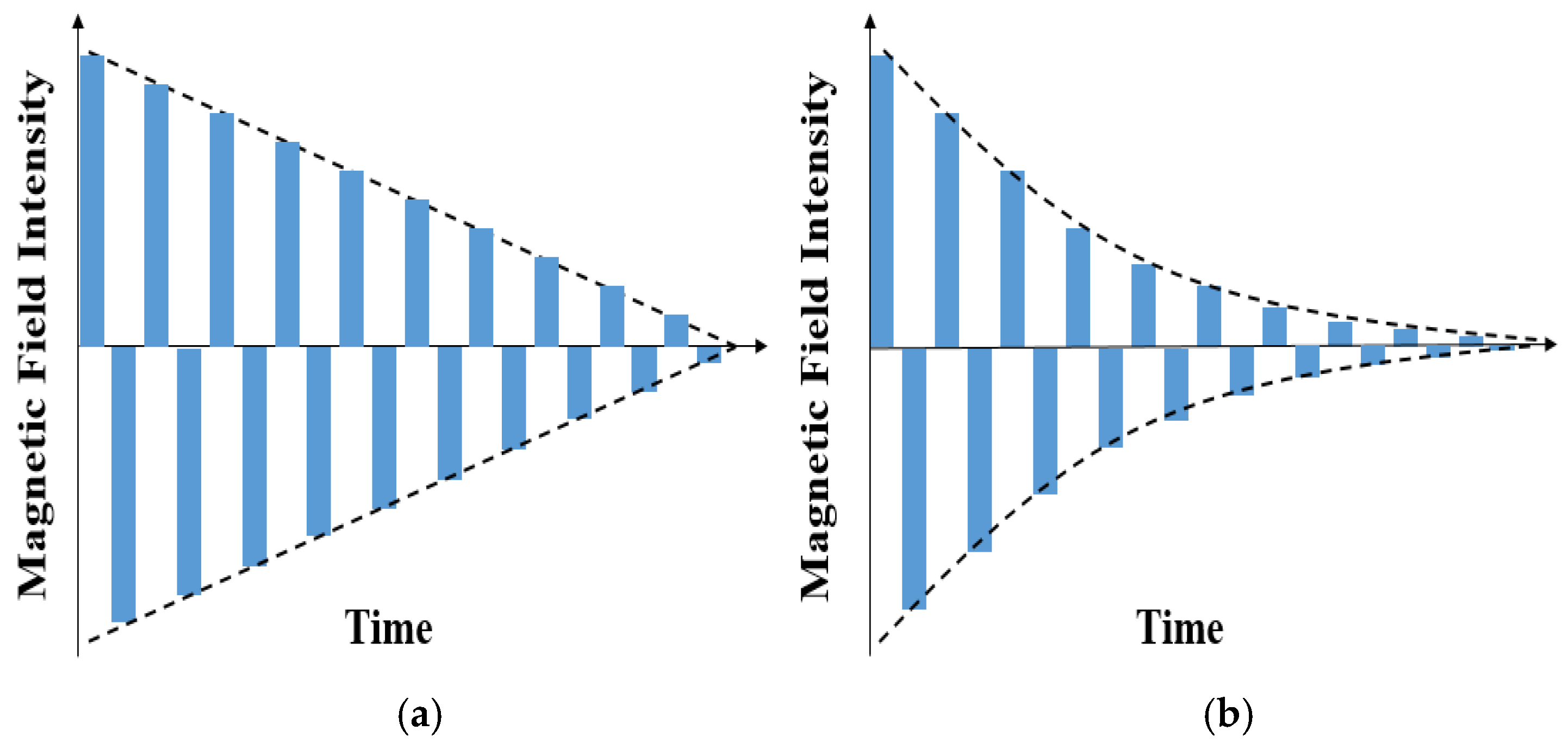
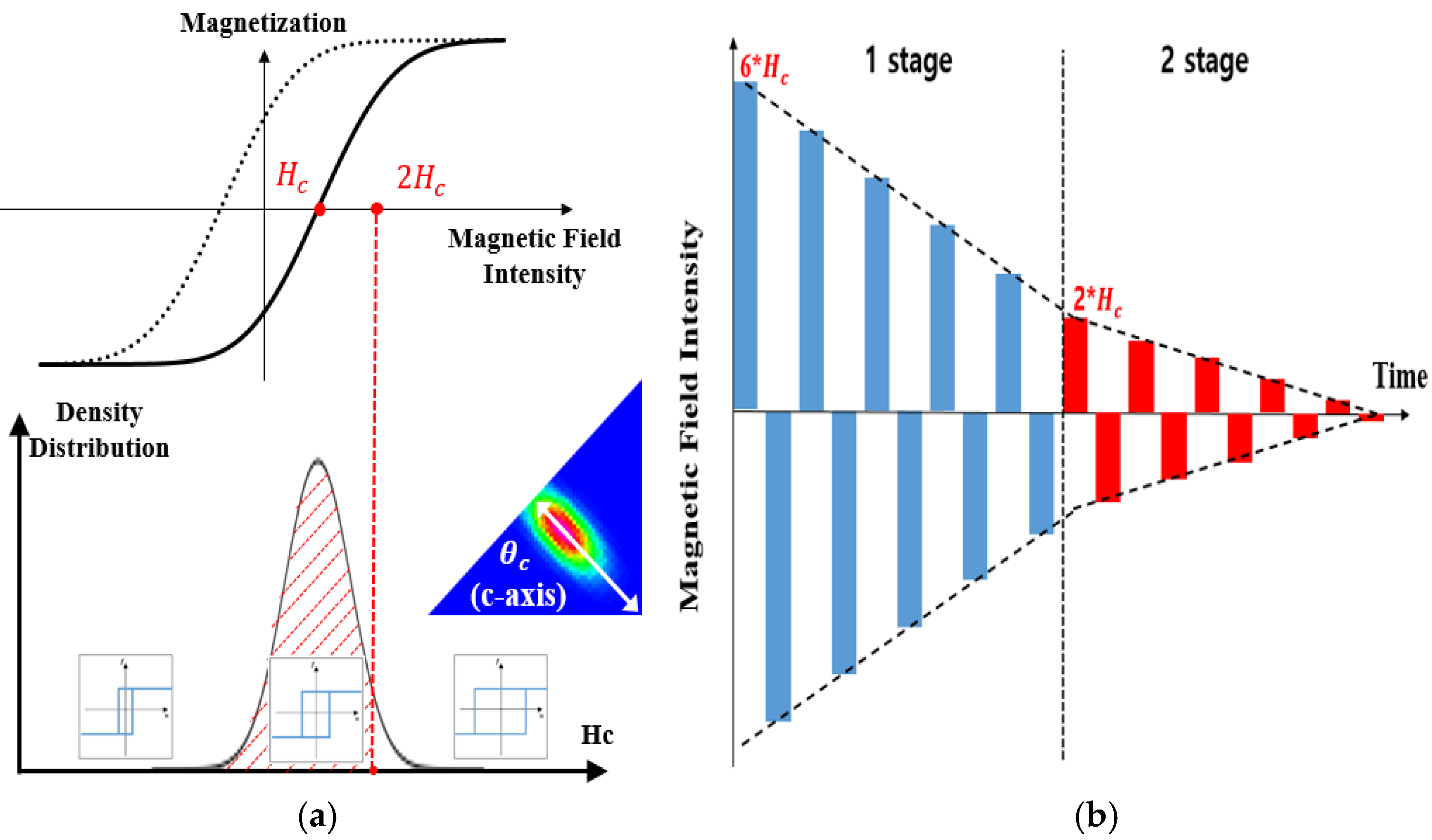
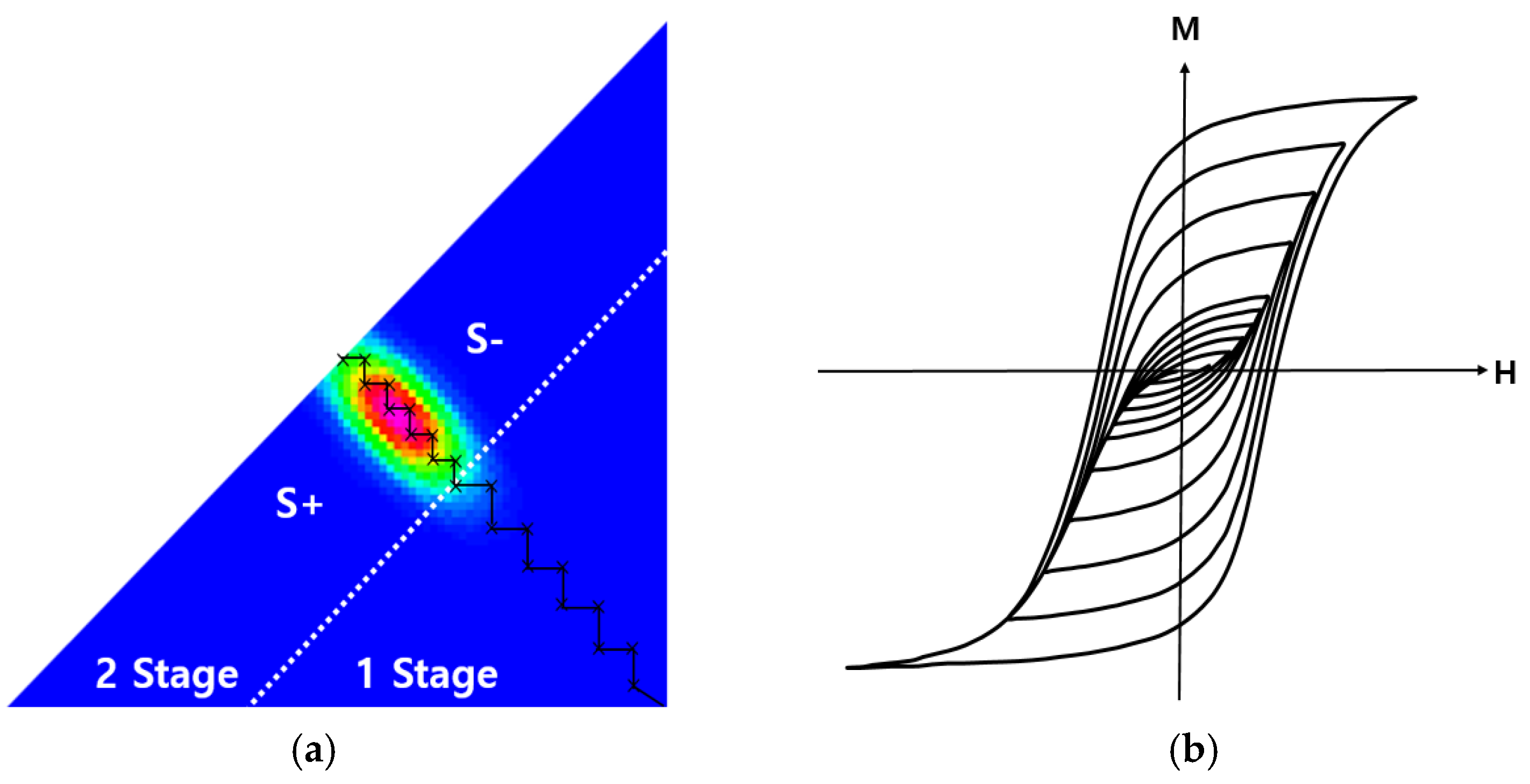

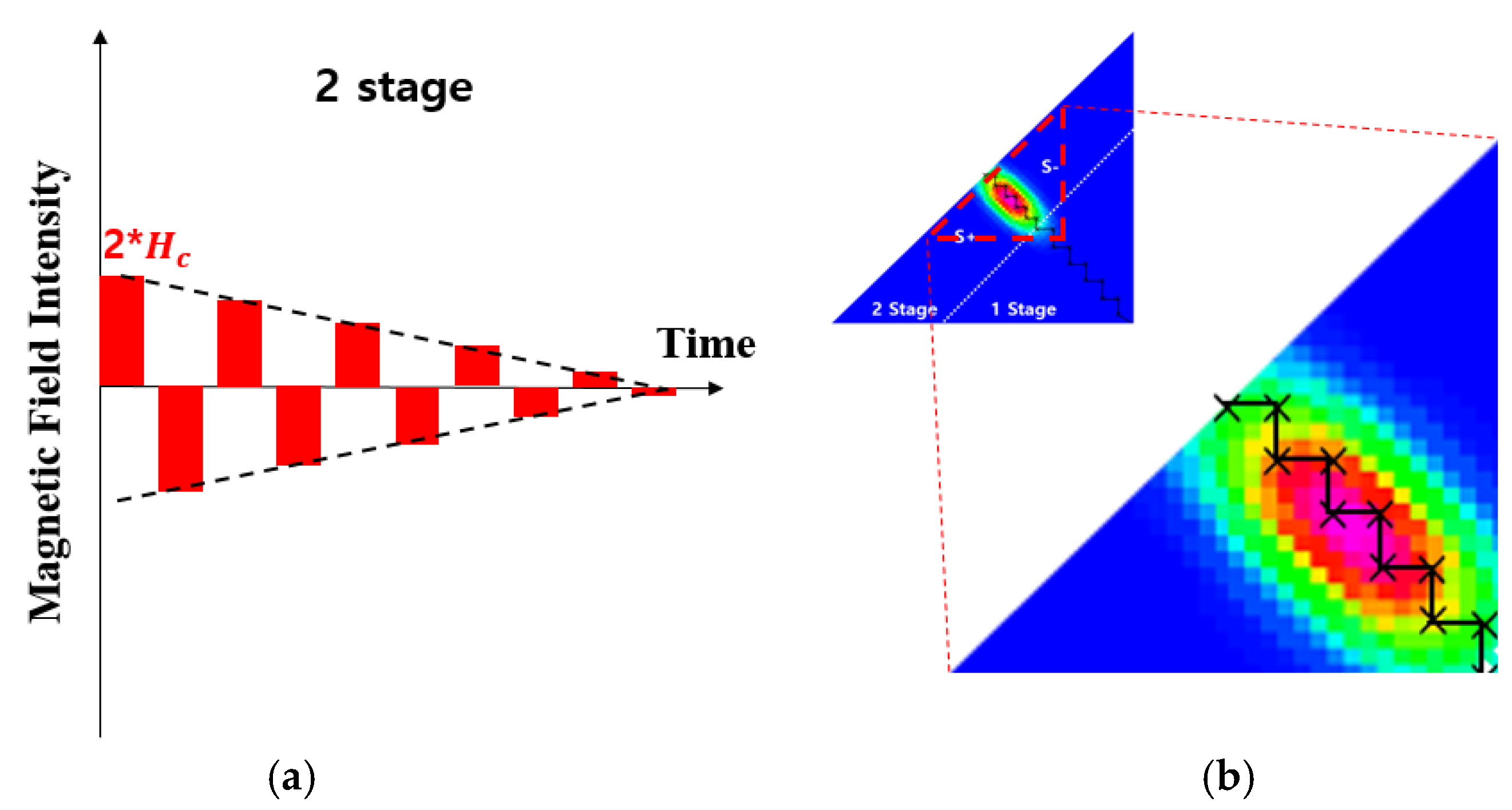

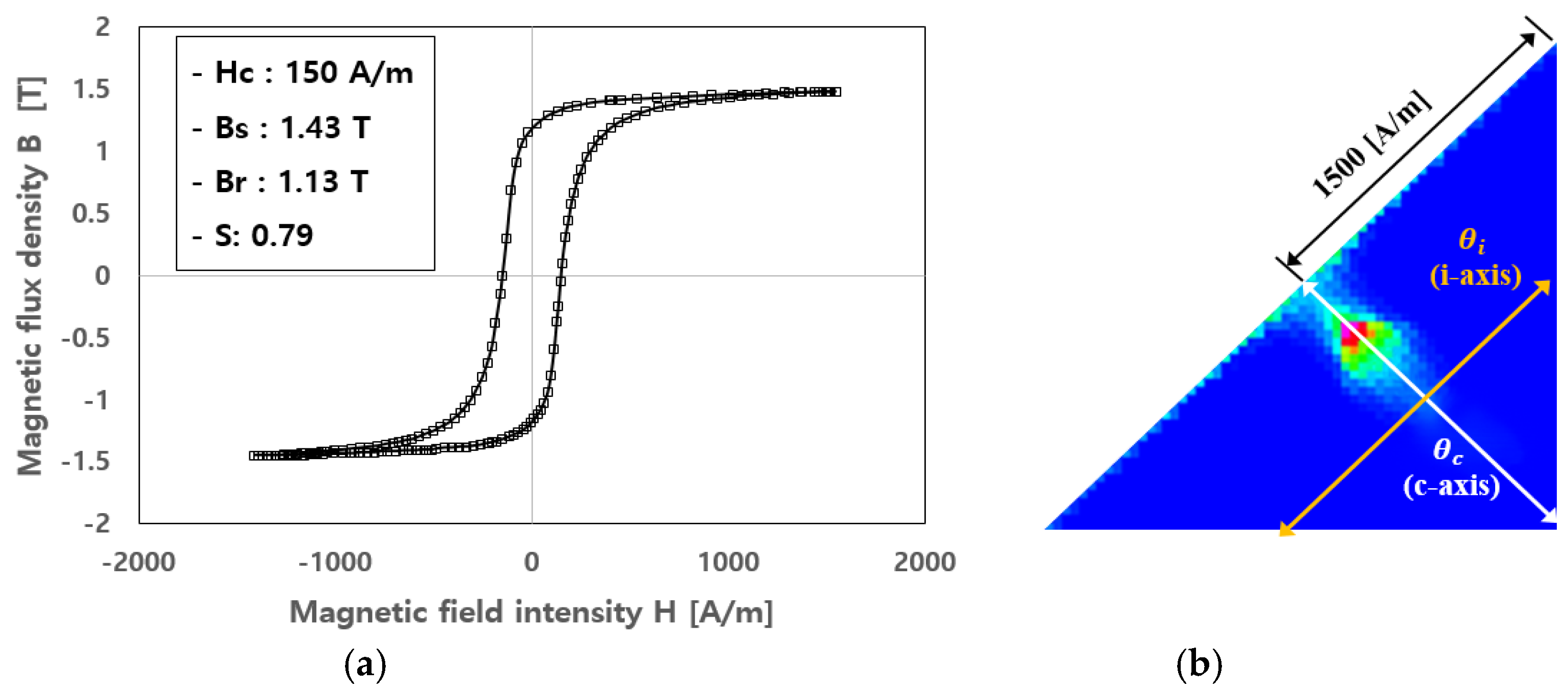
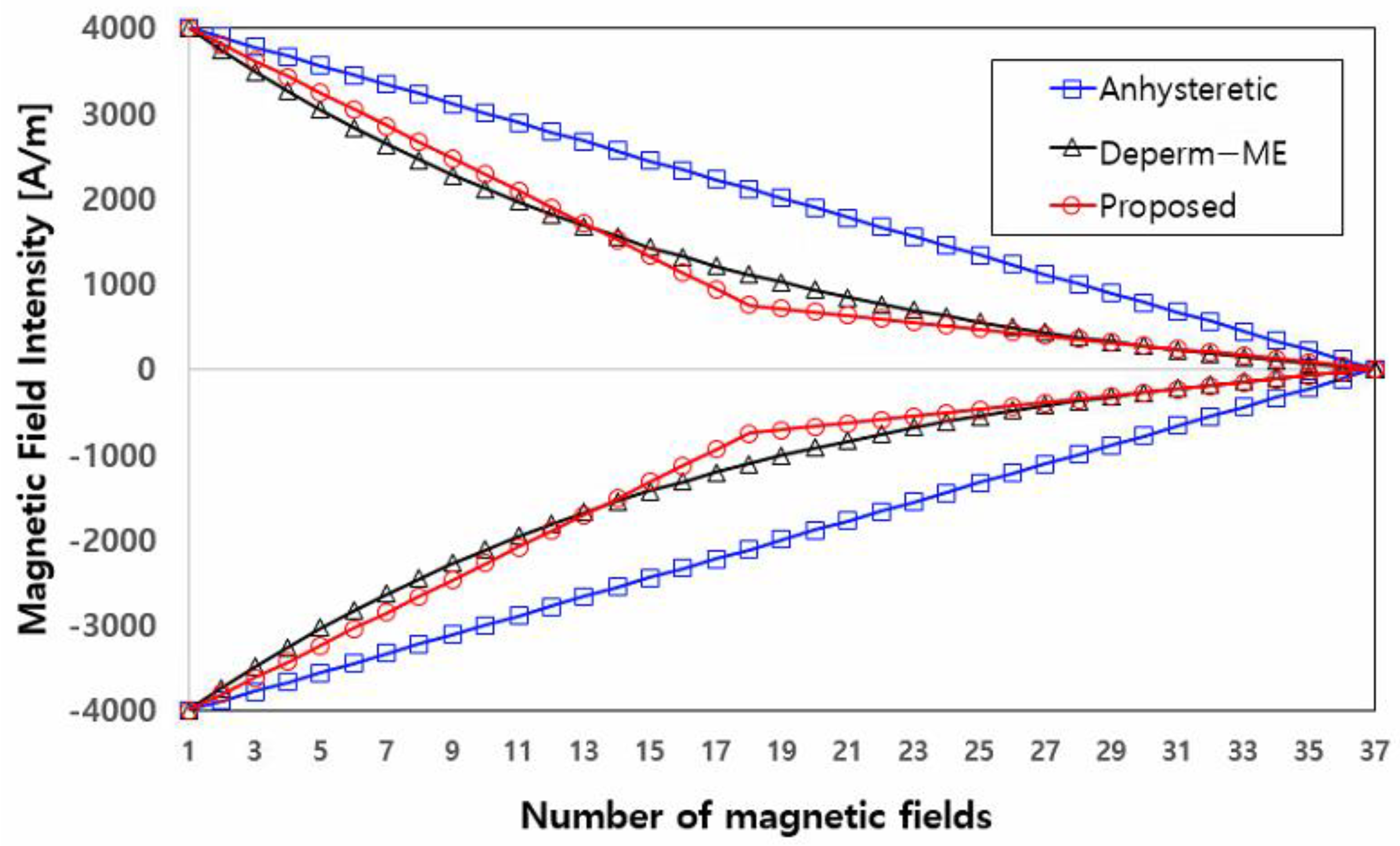
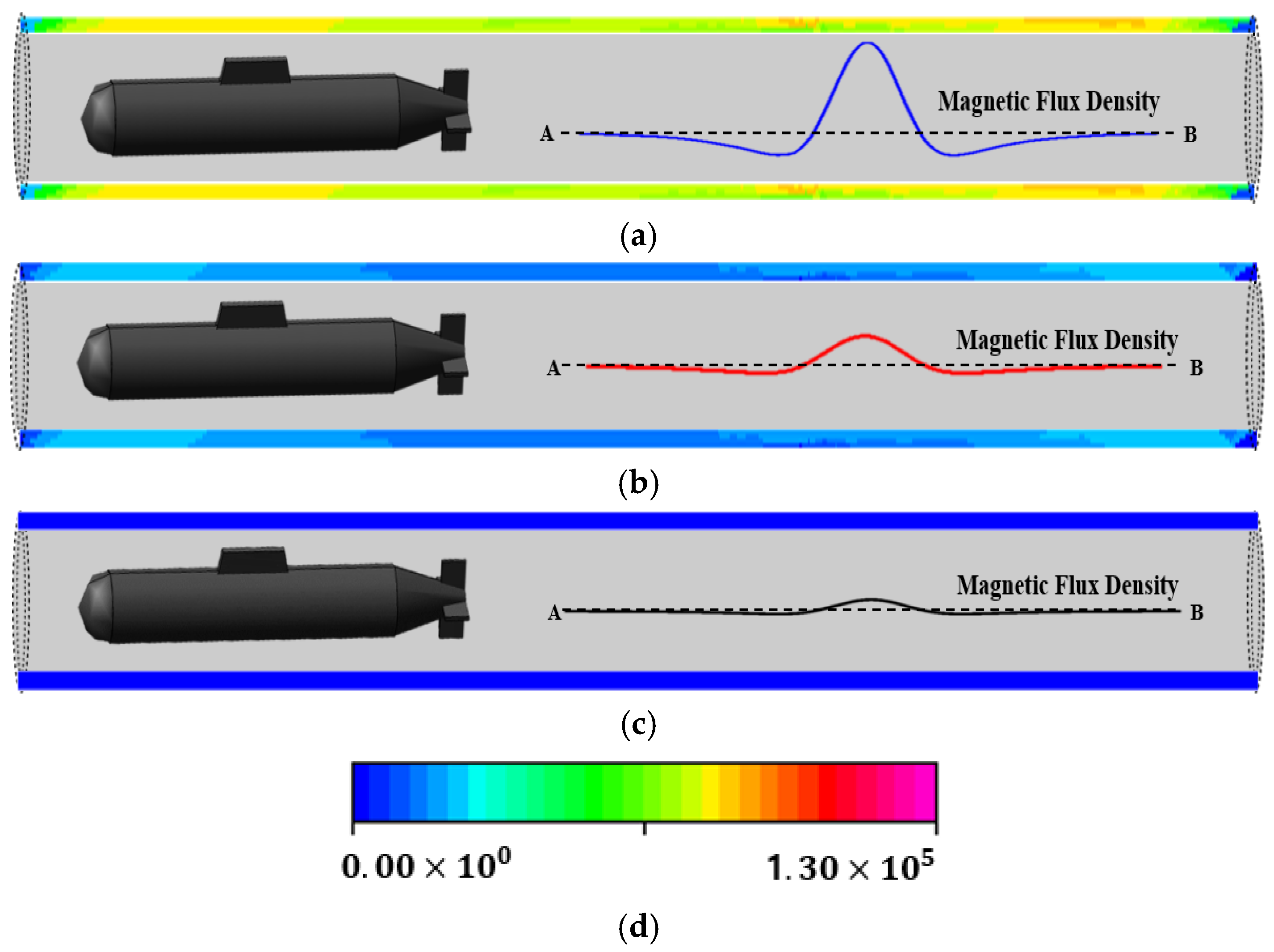
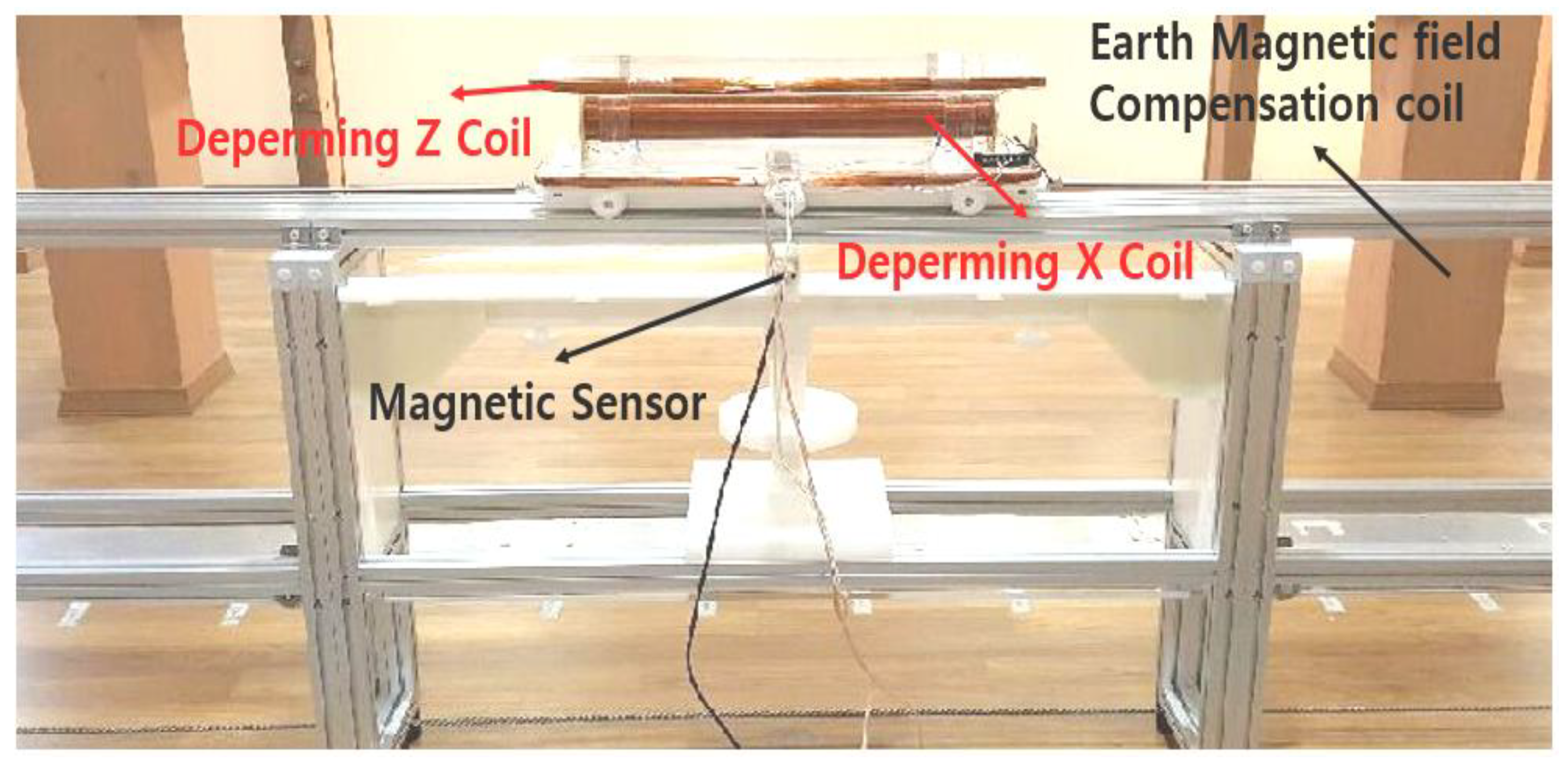
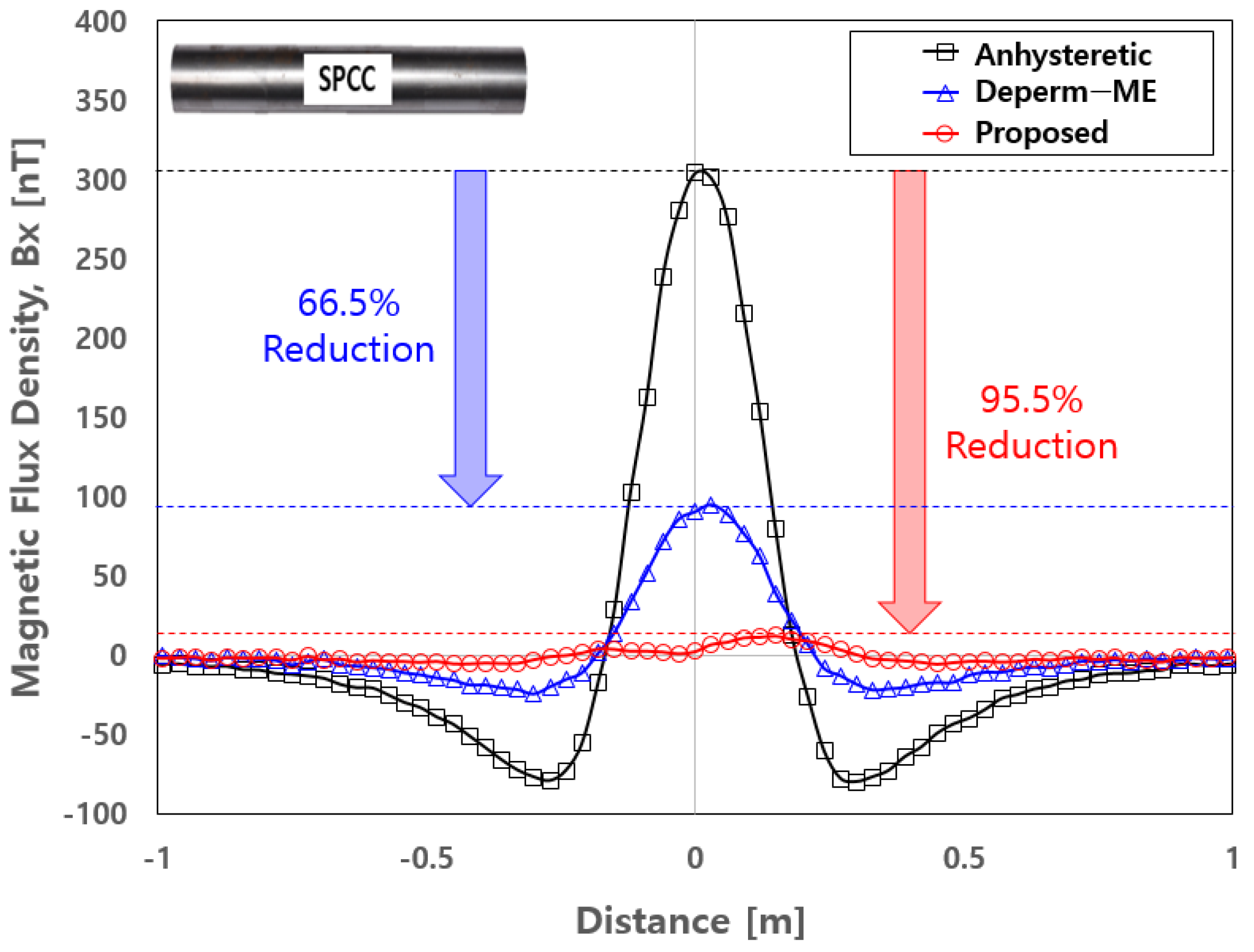

| Protocols | Shot Numbers | Time | Magnetic Flux Density (Reduction Rate) |
|---|---|---|---|
| Anhysteretic | 36 | 288 s | 304.0 nT |
| Deperm-ME | 36 | 288 s | 94.9 nT (33.5%) |
| Proposed | 36 | 288 s | 12.2 nT (4.5%) |
| Protocols | Shot Numbers | Time (Reduction Rate) | Magnetic Flux Density |
|---|---|---|---|
| Deperm-ME | 36 | 288 s | 94.9 nT |
| Proposed | 36 | 288 s | 12.2 nT |
| Reduced 4 shot | 32 | 256 s (88.8%) | 33.6 nT |
| Reduced 8 shot | 28 | 224 s (77.7%) | 70.6 nT |
Publisher’s Note: MDPI stays neutral with regard to jurisdictional claims in published maps and institutional affiliations. |
© 2021 by the authors. Licensee MDPI, Basel, Switzerland. This article is an open access article distributed under the terms and conditions of the Creative Commons Attribution (CC BY) license (https://creativecommons.org/licenses/by/4.0/).
Share and Cite
Im, S.-H.; Lee, H.-Y.; Park, G.-S. Novel Deperming Protocols to Reduce Demagnetizing Time and Improve the Performance for the Magnetic Silence of Warships. Energies 2021, 14, 6295. https://doi.org/10.3390/en14196295
Im S-H, Lee H-Y, Park G-S. Novel Deperming Protocols to Reduce Demagnetizing Time and Improve the Performance for the Magnetic Silence of Warships. Energies. 2021; 14(19):6295. https://doi.org/10.3390/en14196295
Chicago/Turabian StyleIm, Sang-Hyeon, Ho-Yeong Lee, and Gwan-Soo Park. 2021. "Novel Deperming Protocols to Reduce Demagnetizing Time and Improve the Performance for the Magnetic Silence of Warships" Energies 14, no. 19: 6295. https://doi.org/10.3390/en14196295
APA StyleIm, S.-H., Lee, H.-Y., & Park, G.-S. (2021). Novel Deperming Protocols to Reduce Demagnetizing Time and Improve the Performance for the Magnetic Silence of Warships. Energies, 14(19), 6295. https://doi.org/10.3390/en14196295






